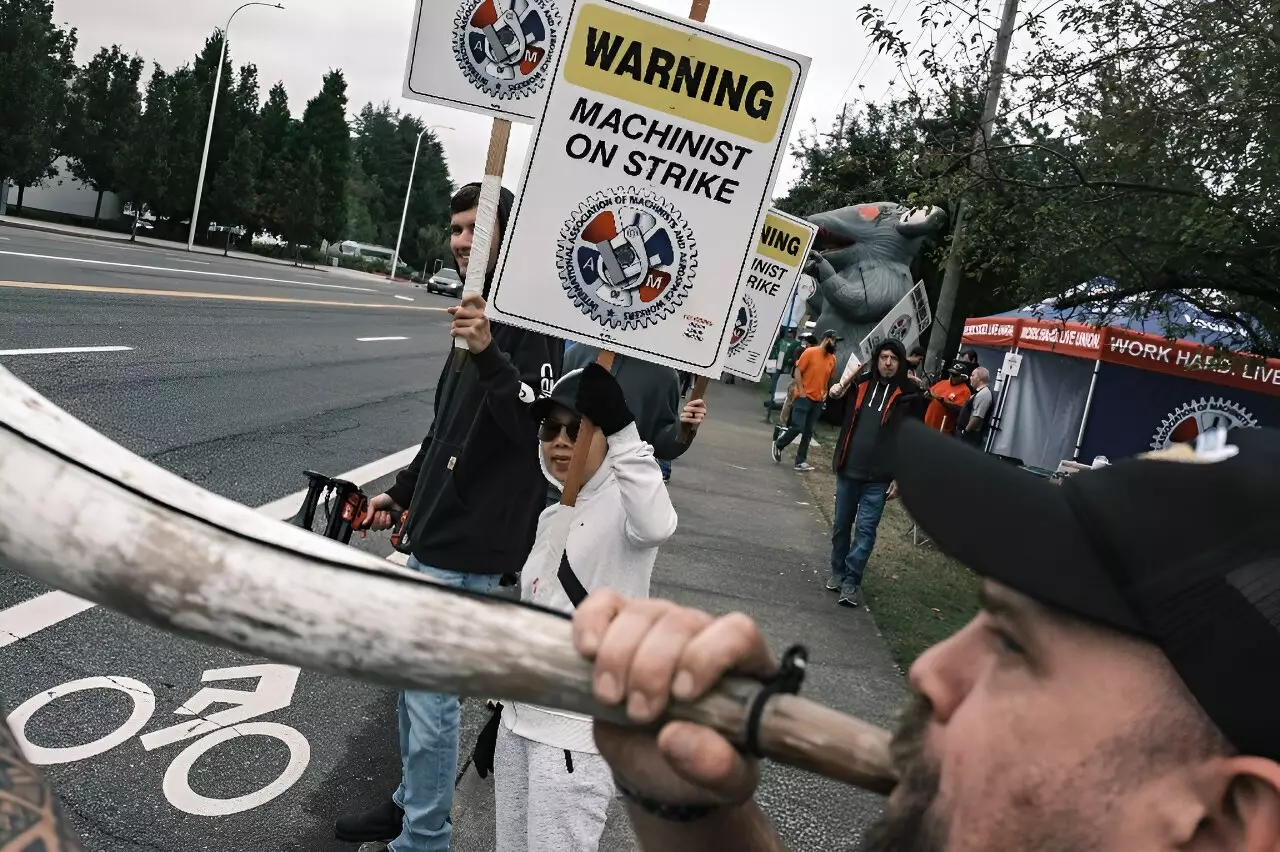The escalating labor unrest at Boeing has reached a critical juncture as contract negotiations between the company and its striking workers have faltered. Over 33,000 employees represented by the International Association of Machinists and Aerospace Workers (IAM) initiated the strike on September 13, effectively crippling operations at key assembly plants responsible for manufacturing the 737 MAX and 777 aircraft. The catalyst for this action stemmed from the rejection of a proposed contract, which the workforce deemed unsatisfactory amidst rising costs of living and labor demands.
The IAM has publicly stated that discussions with Boeing have effectively “broken off,” leaving both sides in a state of impasse. The union emphasized its willingness to re-engage in talks, whether independently or through mediation, signaling openness for resolution. In stark contrast, Boeing expressed a commitment to restoring and rejuvenating its relationship with the workforce, asserting their readiness to negotiate in good faith. However, no meetings have been scheduled to address the ongoing conflict, exacerbating tensions and uncertainty.
Boeing’s recent proposal aimed at alleviating employee grievances included a highly publicized “best and final offer,” which proposed a significant 30 percent wage increase and the reinstatement of an annual bonus. This deadline-driven approach appeared as a last-ditch effort to curtail the strike, yet the IAM has firmly rejected these terms, indicating that they fall short of the essential changes needed to satisfy their members.
As conversations unfolded, it became increasingly clear that pivotal issues remain unaddressed. The IAM highlighted a notable lack of progress regarding critical benefits such as pensions. The IAM articulated disappointment with Boeing’s resistance to unfreeze the defined benefit plan, a significant concern for many workers as they plan for their financial futures. Additionally, the union pointed out Boeing’s unwillingness to engage substantively on fairly escalating salaries, improving wage progression timelines, and enhancing paid time off — all key elements to creating a more favorable working environment.
The deadlock could have far-reaching implications not just for the workers, but for Boeing as well. Prolonged strikes can impact production schedules, financial performance, and public perception. There is growing unrest among employees who feel their livelihoods are being jeopardized by inadequate responses from their employer.
The general public’s sentiment towards the strike is mixed, with many sympathizing with the employees for demanding fair compensation in the face of rising living costs. The situation attracts substantial media attention, turning the spotlight on labor relations within one of America’s largest aerospace companies.
As the strike grinds on, both Boeing and the IAM must assess the ramifications of their standpoints. The IAM is standing firm to advocate for workers’ rights while Boeing seeks to maintain operational efficiency and profitability. The outcome of this conflict may set precedents for future labor negotiations in the aerospace sector and potentially alter labor relations in other industries facing similar pressures.
If both parties cannot find common ground, the looming specter of sustained labor unrest could present critical challenges for Boeing’s operations and workforce morale moving forward.


Leave a Reply